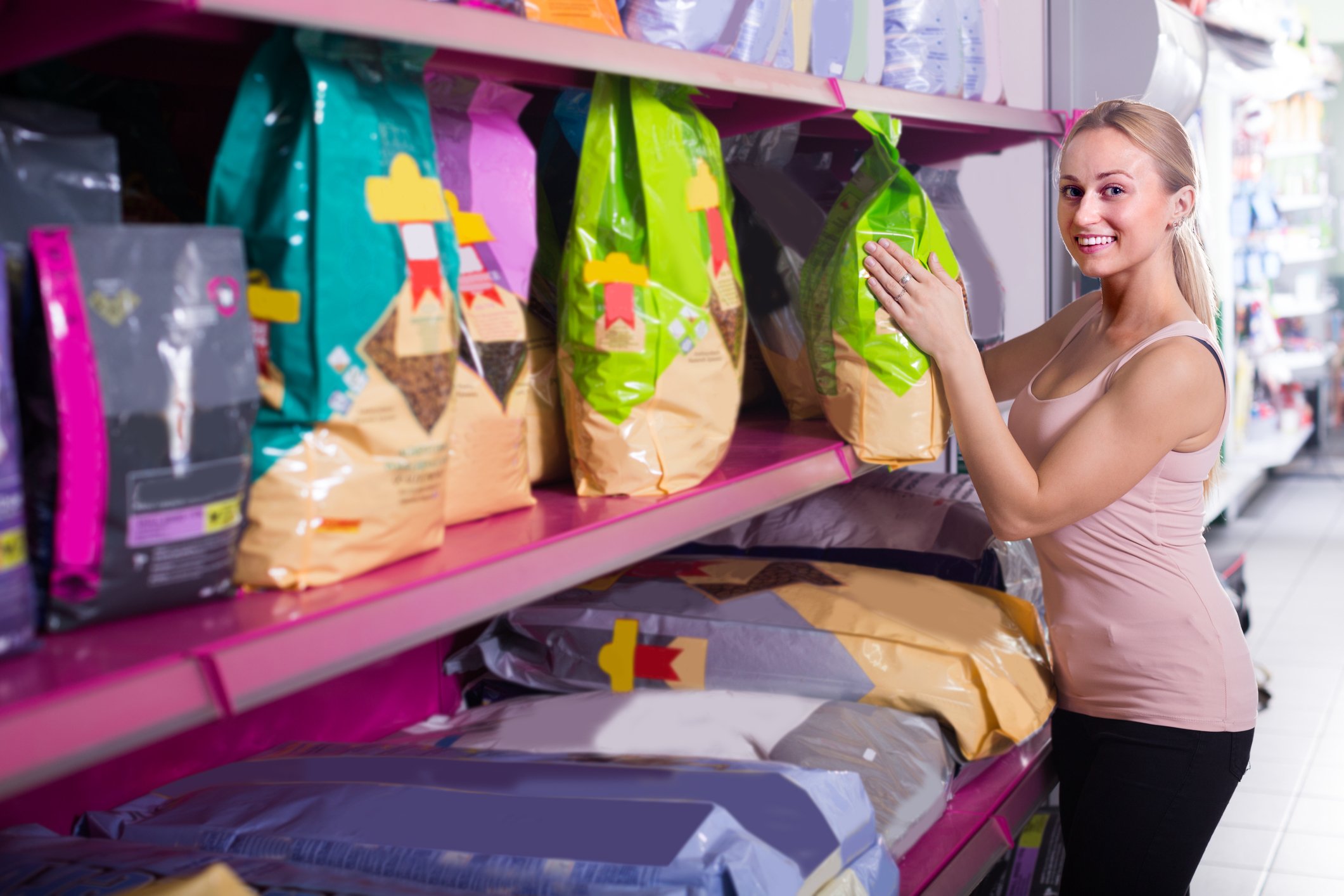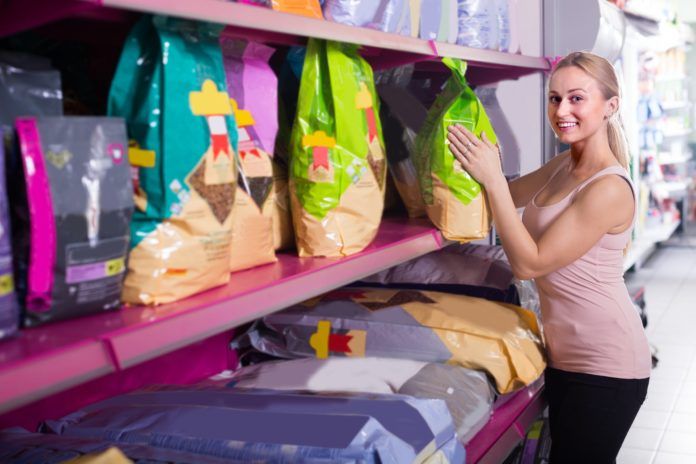© Iakov Filimonov | Dreamstime.com

While individual cats may differ dramatically in various ways, all are alike in their need for a nutritionally sound and palatable daily diet. Fortunately, says Cailin Heinze, VMD, DACVN, assistant professor of nutrition at the Cummings School, nutritionally sound cat foods are readily available in abundance these days on the shelves of local supermarkets and pet supply stores. The ingredients of these commercial products are based on requirements published annually by the Association of American Feed Control Officials (AAFCO), which stipulate that — in order to be labeled “complete” and “balanced” — the foods must comply with rigorous AAFCO nutritional standards.
Choose a commercial cat food
According to Dr. Heinze, “Most veterinarians would credit modern commercially available diets with improving overall feline health and contributing to the longer lifespans enjoyed by today’s pet cats. It’s very rare these days that a veterinarian sees a cat who doesn’t do well on these foods. There are a couple of medical conditions in which it could happen, but if you’re feeding a good-quality commercial diet, you’ll not have a nutritional problem in terms of a deficiency in 99 percent of cats. It’s really, really uncommon.”
Although the vast majority of owners need not worry that their animals may not be consuming a complete and well-balanced diet, Dr. Heinze believes that owners should be aware of what the components of such diets are, their functions in the feline system and the potential risks involved in feeding a regimen — such as a homemade diet — that may be deficient.
The essential components in the necessary feline diet include vitamins, minerals, proteins and fats. (As for carbohydrates, Dr. Heinze says: “While cats as well as humans need them in order to maintain healthy blood sugar, cats make their own carbohydrates, so they don’t need them added to their diets.”)
How vitamins are necessary
Vitamins are water- or fat-soluble organic substances that exist naturally in plant and animal foods and are needed in small amounts for the growth and proper functioning of the feline body.
Some vitamins are produced within a cat’s system, while others must be consumed in the routine diet. A wide array of disorders can result from an animal’s inability to produce sufficient amounts of vitamins or from a lack of these substances in her food. The consequences, says Dr. Heinze, depend on which vitamin is deficient in quantity. “For example,” she points out, “a vitamin D deficiency can cause bone problems — like osteoporosis in elderly humans — that can lead to fractures.”
A vitamin A deficiency, on the other hand, may cause retarded growth, decline in appetite, eye infections, poor muscle coordination and brain damage. A lack of vitamin B1 (thiamine) can result in weight loss and severe neurologic disorders. And a deficiency of vitamin E can lead to a potentially fatal disorder called steatitis, which is marked by the inflammation of an animal’s body fat.
The importance of minerals
Minerals such as calcium, phosphorous, sodium, potassium, magnesium, iron, copper, zinc and iodine are also essential to a cat’s health. They help maintain the body’s tissues, its fluid flow, and a proper balance of electrolytes (compounds that regulate the electric charge across cell membranes), as well as serving important roles in the metabolism of proteins, fats and carbohydrates.
Given the important roles that they play, minerals — like proteins and vitamins — must be appropriately balanced in a cat’s system. “Each individual nutrient can have a deficiency syndrome,” says Dr. Heinze. Calcium, for example, is instrumental in bone and tooth development, blood clotting, and many cellular functions. A deficiency of this mineral may result in bone disease and muscle disorders. A magnesium deficiency can slow the growth of kittens and cause muscle weakness in adults. A cat with a potassium deficiency may become lethargic and uncoordinated. And a zinc deficiency can cause serious skin disease.
Importance of protein
Proteins are the source of certain chemical compounds called amino acids, which are necessary for building and maintaining the supporting structures in a cat’s body — the muscles, ligaments and tendons as well as all of the enzymes that preform vitally necessary chemical reactions within the feline body.
A cat needs about 20 different amino acids in correct ratios in order for her body to function properly. Half of these can be adequately synthesized within the body, but the remainder — the “essential amino acids” — cannot, and thus must be taken in via the diet. Although proteins exist in plant-based foods, they are typically unavailable in sufficient quantity and may not contain sufficient amounts of certain amino acids. Therefore, cats should take in most of their protein by consuming animal-based foods, such as meat and fish. Common signs of protein or amino acid deficiency include muscle loss, abnormal skin pigmentation and a chronic shedding of hair that results in patches of bald spots on a cat’s head, back, abdomen and legs.
Several decades ago, Dr. Heinze notes, a serious deficiency of an amino acid called taurine was prevalent in the feline population. This deficiency was responsible for serious diseases of the heart, eyes and reproductive system. Taurine deficiency rarely occurs today among domestic cats, however, because cat food manufacturers now supplement their products with adequate amounts of taurine.
How fats play a major role
Fats are a significant source of energy, supplying a variety of important fatty acids and harboring several fat-soluble vitamins. A deficiency in one important fatty acid — linoleic acid — can lead to a variety of dermatologic and reproductive problems, says Dr. Heinze.
“You can actually have a high-fat diet that’s low in linoleic acid,” she notes, “and we’ve known this for 40 years, so the problem doesn’t really occur in commercial diets today. But the cat diets that people make on their own are often low in this specific nutrient.”
The signs that a cat is experiencing a nutritional deficiency may be elusive, Dr. Heinze points out. “Sometimes,” she says, “there are absolutely no signs whatsoever until something catastrophic happens. The cat jumps off a couch and starts limping, for instance, and it turns out that she has a leg fracture due to poor bone density, the result of a calcium deficiency. Or a cat with a thiamine deficiency may start eating less of her food, maybe vomit and have diarrhea. And this can progress to severe neurologic signs — the cat may be unable to walk or may stumble and sway as if she’s drunk. These signs generally aren’t immediately recognizable as being caused by a specific nutrient deficiency. They can also be related to a number of different health problems.”
Owners should also be aware that pregnant cats need more nutrients than non-pregnant adult animals; and a diet that’s formulated for adult cats may be nutritionally deficient for kittens, who require higher nutritional content in their food.
Don’t supplement randomly
Is it advisable to augment a cat’s routinely consumed food with a nutritional supplement? “This is generally not a good idea,” Dr. Heinze says. An appropriate commercial diet should have all of the nutrients that a cat needs, and it is possible to overdose a vitamin or mineral. A vitamin D overdose, for instance, can cause kidney disease.” If you are considering it, you should speak with your veterinarian first.
The best way to maintain a cat’s nutritional health, says Dr. Heinze, “is to feed a commercially available diet — either wet or dry — with an AAFCO statement on the package ensuring that the food is ‘complete and balanced.’ For a kitten (up to a year old), the AAFCO statement should say either ‘for growth’ or ‘for all life stages.’ For an adult cat, the statement should say ‘for adult maintenance’ or ‘for all life stages.'” — Catnip staff




